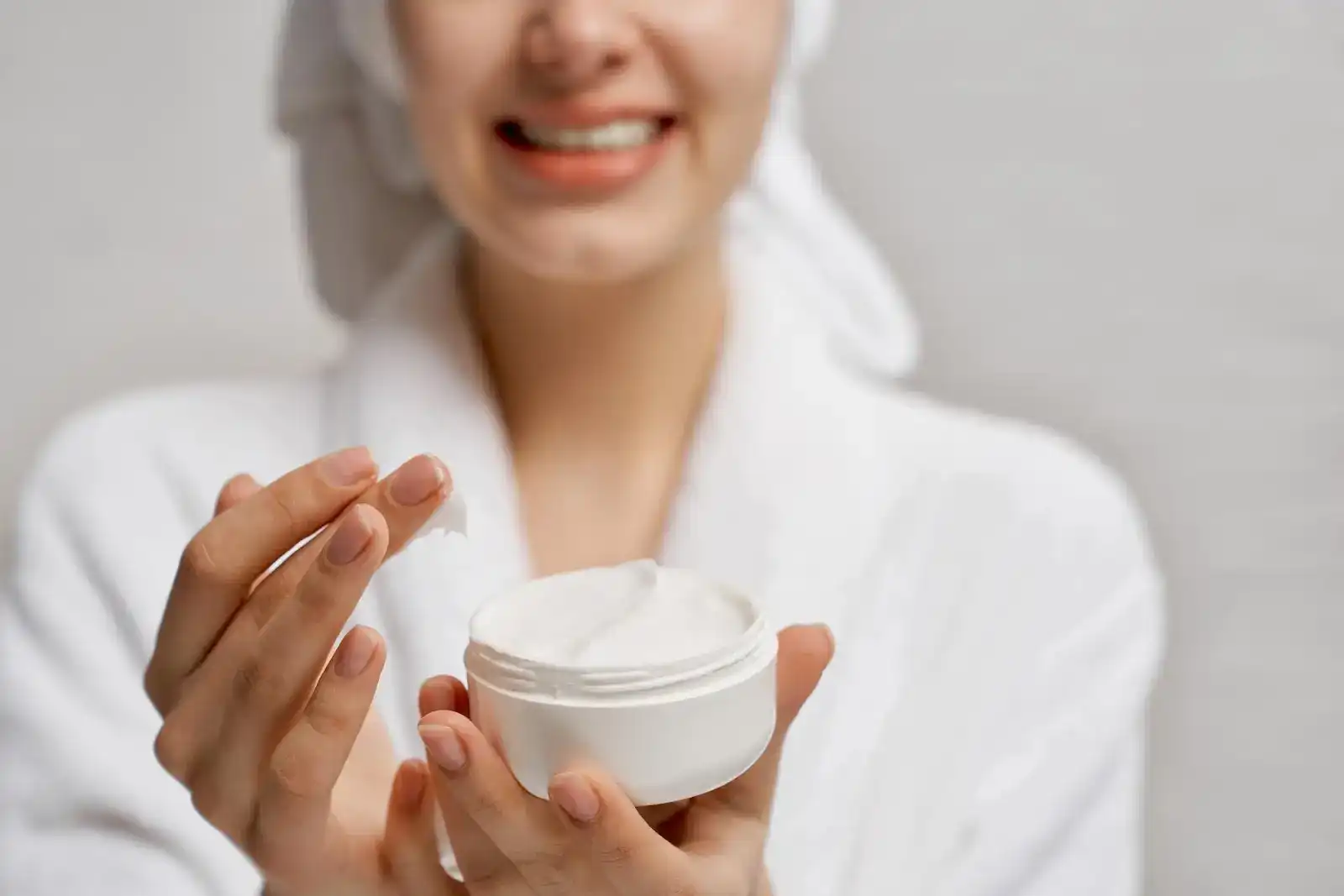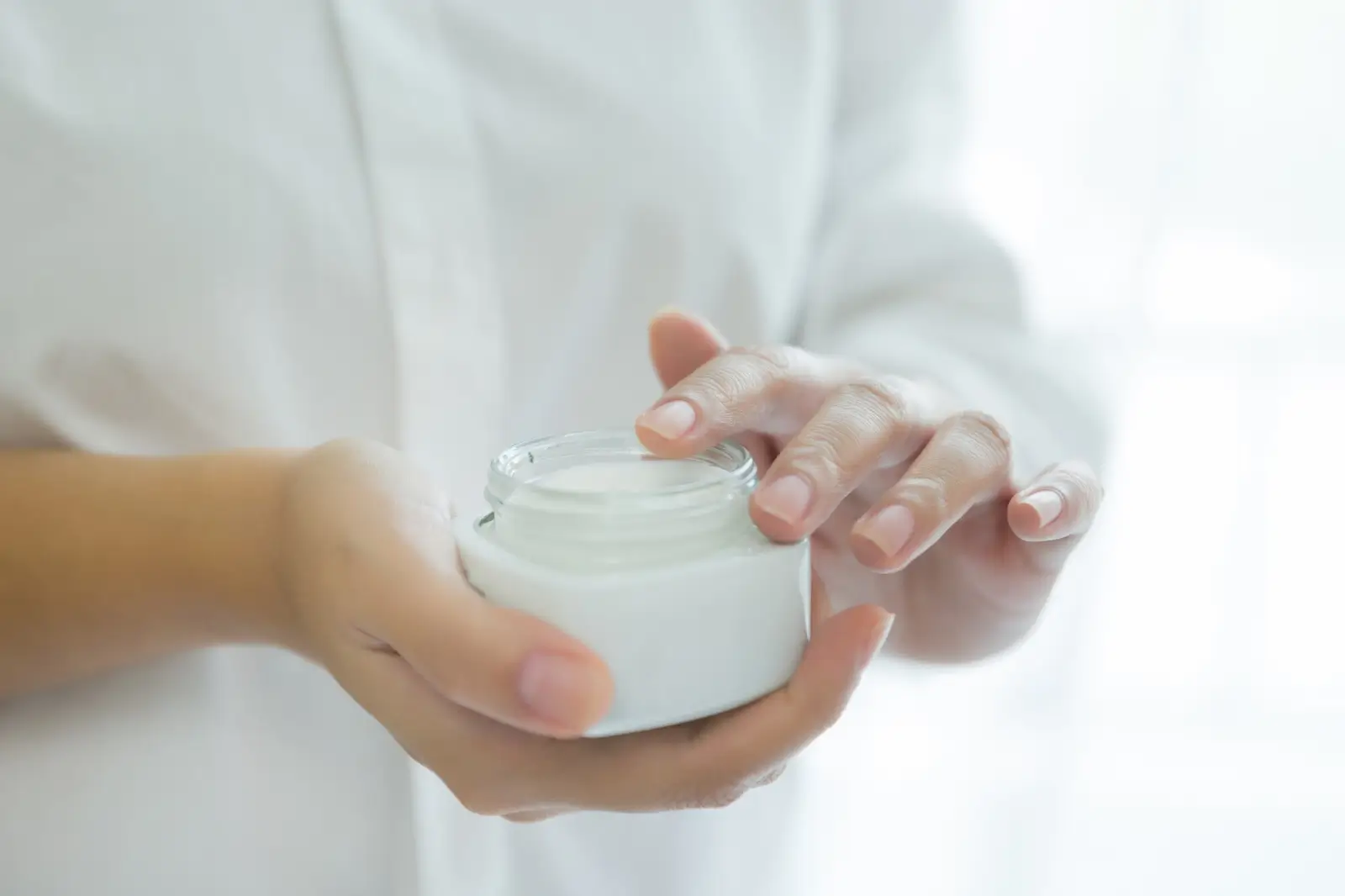Business Hours: Monday - Friday: 9 AM - 6 PM EST

What Is in EMLA Cream?
David Fuller
Last Updated On: April 14, 2025
Topical anesthetic creams are increasingly used in dermatologic and cosmetic procedures to minimize discomfort during minor skin treatments, injections, and laser therapies. Among these, lidocaine-based formulations are particularly favored for their well-established safety and pain-relieving properties.
One standout product is EMLA cream, a topical anesthetic that combines 2.5% lidocaine and 2.5% prilocaine. This eutectic mixture works by blocking nerve signals in the skin, providing effective and temporary numbing for various medical and cosmetic procedures. Its dual-ingredient formula ensures localized pain relief without the need for invasive methods.
This article will explore what’s inside EMLA cream, breaking down its active components and explaining how each contributes to its therapeutic numbing effect.
Key Takeaways
- EMLA cream is a topical anesthetic that contains 2.5% lidocaine and 2.5% prilocaine, forming a 5% total anesthetic concentration effective for minor procedures.
- The eutectic mixture of its active ingredients ensures efficient skin penetration by keeping both anesthetics in liquid form at room temperature.
- Lidocaine and prilocaine act synergistically to block nerve signals by inhibiting sodium channels, resulting in temporary numbness in the treated area.
- Inactive ingredients like Carbomer 974P, polyoxyethylene hydrogenated castor oil, sodium hydroxide, and purified water help maintain the cream’s consistency, pH stability, and absorption.
- The cream reaches peak effectiveness 1–2 hours after application and is primarily metabolized in the liver. Though systemic absorption is typically minimal, it may increase with large surface applications or prolonged use.
- Potential risks include local skin reactions, allergic dermatitis, and in rare cases, methemoglobinemia, particularly with excessive or improper use.
- Healthcare professionals should follow appropriate application protocols and monitor for adverse effects to ensure both efficacy and safety.
About: Operating since 2016, Med Supply Solutions is known for being one of the industry’s top and trusted suppliers of cosmetic and viscosupplementation products. Contact our sales department for more information if you want to buy EMLA cream online.

Active Ingredients: Lidocaine and Prilocaine Concentrations

EMLA cream combines two active ingredients—2.5% lidocaine and 2.5% prilocaine—to create a total anesthetic concentration of 5%. This balanced mixture enables the anesthetics to penetrate both the epidermis and dermis, offering effective, localized numbness. Its formulation is a eutectic mixture, which allows both components to remain in liquid form at room temperature, enhancing skin absorption and speeding up onset time compared to traditional blends.
Synergistic Mechanism of Action for Topical Anesthesia
Lidocaine and prilocaine work synergistically by blocking sodium channels within neuronal cell membranes, inhibiting nerve impulse transmission. This dual action results in effective localized anesthesia. The combination broadens the spectrum of nerve blockade, making EMLA cream more effective than single-agent topical anesthetics in many clinical settings.
Inactive Components and Their Roles in Formulation Stability
Beyond its anesthetic agents, EMLA cream includes inactive ingredients that contribute to the cream’s texture, pH balance, and absorption properties:
- Carbomer 974P: A thickening agent that provides structural consistency and facilitates smooth application.
- Polyoxyethylene Hydrogenated Castor Oil: Functions as an emulsifier, maintaining a stable blend between oil and water phases.
- Sodium Hydroxide: Adjusts the cream’s pH to approximately 9.2, optimizing the chemical stability and bioavailability of the active ingredients.
- Purified Water: Serves as the base solvent, helping distribute other ingredients uniformly across the skin.
Together, these components ensure the cream maintains its integrity over time and delivers consistent anesthetic effects.
Pharmacokinetics: Absorption, Metabolism, and Systemic Considerations

When applied under an occlusive dressing, EMLA’s active ingredients are gradually absorbed into the epidermis and dermis, with effective numbing typically achieved in 1 to 2 hours. Absorption rates may vary based on skin thickness, hydration level, and duration of application.
Once absorbed:
- The cytochrome P450 system in the liver metabolizes lidocaine.
- Prilocaine is metabolized into o-toluidine, a metabolite that, in rare instances, may trigger methemoglobinemia, especially with excessive or prolonged use.
Although systemic absorption is typically low with proper application, caution is warranted for large surface areas or pediatric and geriatric patients.
Potential Risks and Allergic Reactions Associated with Ingredients
While generally safe, EMLA cream may cause adverse effects in some users:
- Local Reactions: Transient redness, pallor, itching, or swelling at the site of application are common and usually resolve quickly.
- Methemoglobinemia: Rare but serious, particularly linked to prilocaine in high doses or prolonged use.
- Allergic Contact Dermatitis: May occur in sensitive individuals, particularly those with a history of amide-type anesthetic allergies.
Healthcare professionals should monitor for signs of sensitivity and educate patients about safe usage practices—especially when comparing EMLA vs LMX, as LMX contains lidocaine only and may be preferred by those needing a simpler or single-agent formula.
Conclusion
EMLA cream, with its combination of 2.5% lidocaine and 2.5% prilocaine, delivers effective and controlled topical anesthesia for various medical and cosmetic procedures. Its formulation—supported by stabilizers like Carbomer 974P and emulsifiers—ensures consistent results across applications.
Understanding its mechanism of action, ingredient profile, and risk factors allows healthcare providers to optimize usage, balancing efficacy with patient safety. While generally well-tolerated, monitoring for rare side effects such as methemoglobinemia or dermatitis remains essential, especially during repeated or high-dose applications.
FAQs
1. How does EMLA cream differ from other topical anesthetics like LMX?
EMLA cream contains a combination of lidocaine and prilocaine, whereas LMX contains only lidocaine. This difference in composition can affect the onset time and duration of anesthesia. For a detailed comparison, refer to our article on EMLA vs LMX.
2. Is EMLA cream compatible with all skin types?
EMLA cream is generally safe for use on various skin types. However, individuals with certain skin conditions or sensitivities should consult a healthcare provider before use.
3. How long does it take for EMLA cream to start working?
EMLA cream typically requires 1 to 2 hours under an occlusive dressing on intact skin to achieve effective anesthesia. The exact time may vary based on individual factors and the application area.
4. Are there any contraindications for using EMLA cream?
Do not apply EMLA cream on open wounds or mucous membranes or use it in individuals with known hypersensitivity to lidocaine, prilocaine, or any other component of the cream. Always consult the product’s prescribing information and a healthcare provider for a complete list of contraindications.
5. How does EMLA compare to other topical anesthetics?
Studies show that EMLA provides comparable pain relief to other lidocaine-based creams but may have a longer onset time due to its dual active ingredients.
6. Is EMLA safe for pregnant or breastfeeding women?
While generally considered safe, pregnant or breastfeeding women should consult their healthcare provider before using EMLA cream due to limited data on systemic absorption during pregnancy.
References
Alster TS, Lupton JR. Evaluation of a novel topical anesthetic agent for cutaneous laser resurfacing: a randomized comparison study. Dermatol Surg. 2002;28(11):1004-1006. doi:10.1046/j.1524-4725.2002.02100.x
EMLA: Package insert / Prescribing information. Drugs.com. https://www.drugs.com/pro/emla.html
About lidocaine 2.5% and prilocaine 2.5% cream for micropigmentation. Royal Free London. https://www.royalfree.nhs.uk/patients-and-visitors/patient-information-leaflets/about-lidocaine-and-prilocaine-cream-micropigmentation
Products
Cart
Log In
Newsletter
Subscribe for exclusive offers and updates on new arrivals
Share feedback at:
Working Hours
Monday to Friday: 9 AM to 6 PM EST
The Most Popular Brands
Med Supply Solutions
Support
Copyright 2025. Med Supply Solutions